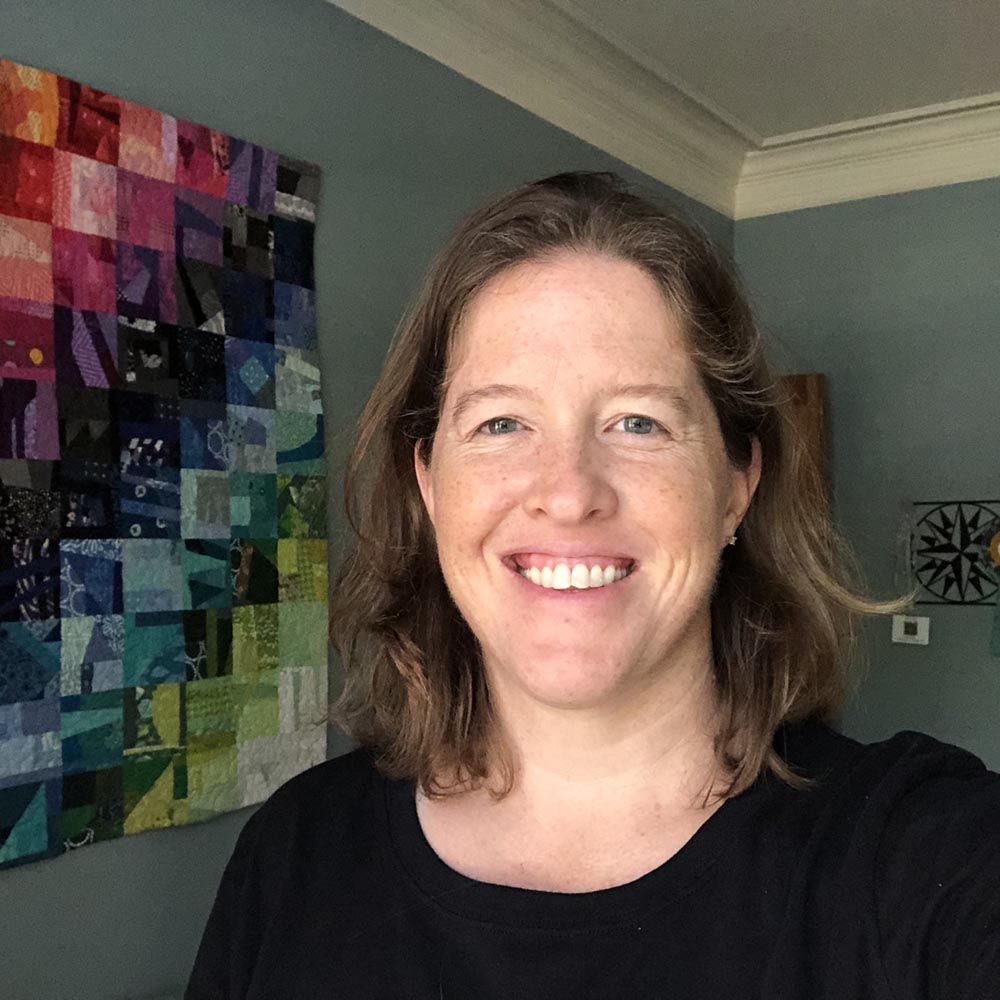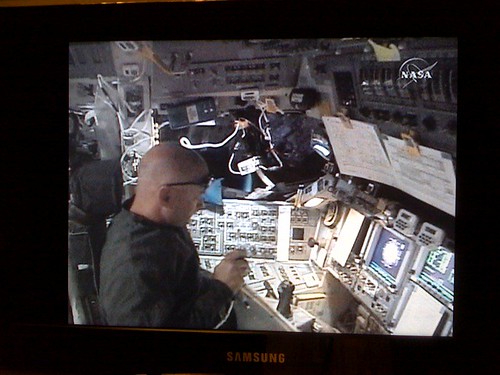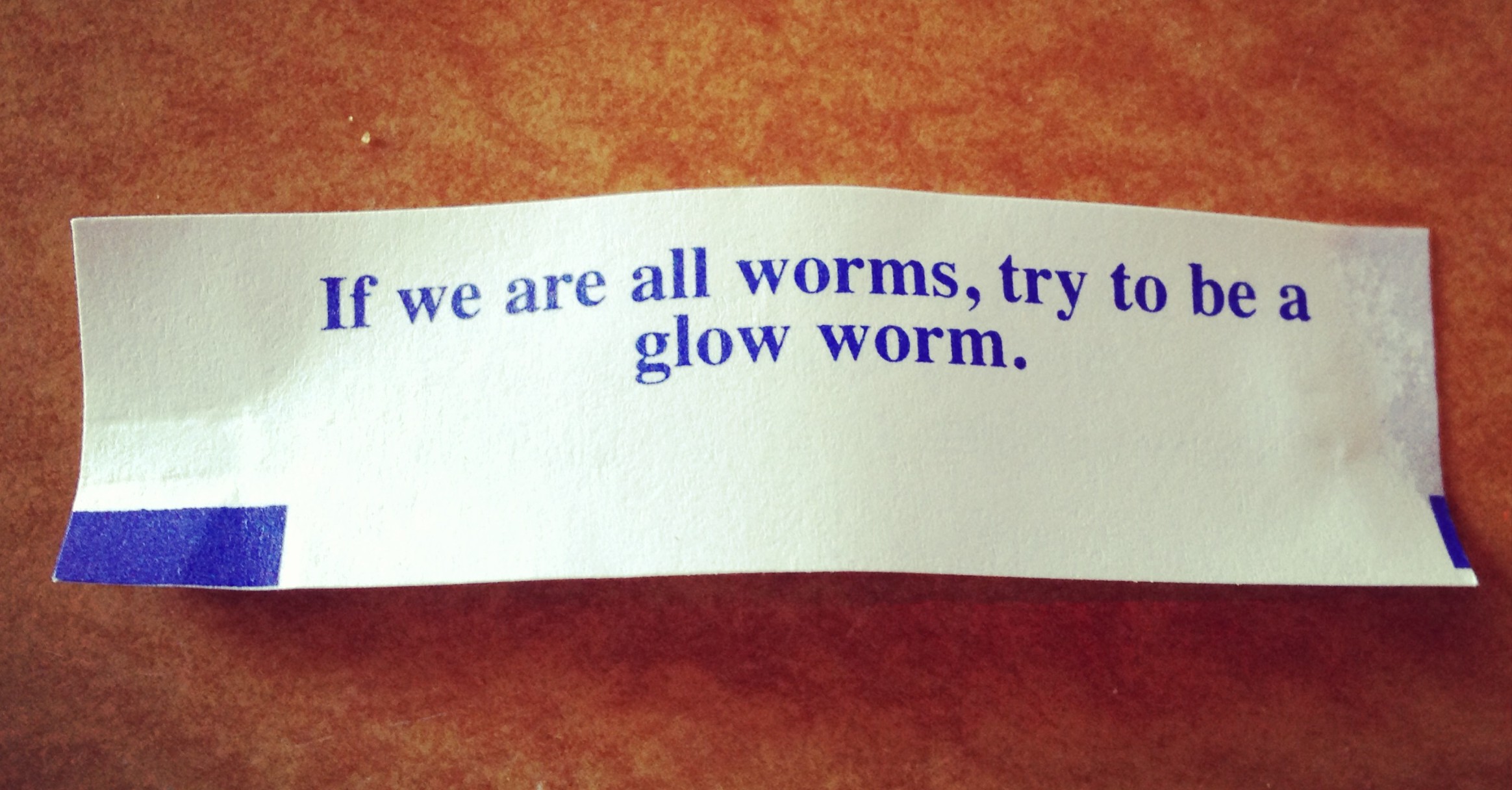We docked to the space station today! I half expected it to be boring, since in real life there are far fewer issues and problems to work on during the 6-hour rendezvous. But then again, for the first time ever, I was sitting on console for a rendezvous that was happening for real. Like, in real life. And that was very exciting.
During the first part of the rendezvous, as we began to take data with the star tracker, the crew “invited us onboard.” What that means is that they had a camera running on the flight deck that we were able to downlink to the ground. It was fun watching them on TV. Mark Kelly, the commander, was having fun spinning his rendezvous procedures book around in zero g, and I saw a lot of smiles and laughter. I’m sure they were very happy to get to the ISS without incident.
(That book he’s holding, by the way? It’s the rendezvous procedures book. And for this mission, I was the rendezvous book manager, in addition to working the flight from the control center. That means I made sure that everything in that book got updated correctly. Two weeks ago, I was looking through that book — the very copy he is holding on the space shuttle — to make sure that the official flight copies were accurate. Then it got shipped to Florida, loaded onto the space shuttle, and now it’s in orbit. Pretty cool.)
It was an eventful rendezvous. Everything went very smoothly, but there were a couple things that were “normal-but-unusual,” meaning that there were a couple things that we (and the crew) are prepared to handle, but don’t always happen. The first interesting thing happened during the star tracker pass. We use a star tracker, normally used to track stars (duh) and use it to track the space station instead, since at a distance the station looks like a very bright star. The data we get from the star tracker helps us update our position in space to be as accurate as possible relative to the space station. During our star tracker pass today, there were 5 stars that passed through the field of view! This is interesting because there is always a chance that the star tracker could get confused and lock onto one of those stars instead of the space station, and screw up our navigation. That didn’t happen today, but we had to watch the data very carefully just in case.
We also did two of our rendezvous burns using the right OMS engine. Again, this isn’t a big deal, but we usually use the left engine. The left engine had a minor problem during ascent, so to be safe, we aren’t going to use it again until it’s time to deorbit. Because we used the right OMS engine, we had to be in a slightly different orientation during two of our burns. And that slightly different orientation meant that there was an increased chance that our radar would lose its lock on the space station. So we had to do a couple slightly different steps to protect for that case — even though it turned out that the radar never lost track of the ISS.
The final interesting thing is that due to various dispersions, our approach trajectory was a little bit shallow. This meant that one of our midcourse correction burns did not fall into the nominal 10-minute window — the onboard guidance calculated that it was late, almost a minute beyond our accepted window. To correct for this, we had to load a different set of targets and perform that burn right at the end of the window. Again, not a big deal since the crew is well-trained for this type of thing, but it was still an interesting case to see in real life.
Some days my job is not that exciting. But today was different. Today was a very good day!








I dropped a note to Roberta at the Chronicle to remind her that Karen was on STS-124. Unfortunately, I hadn’t been paying attention until I saw the poster image that you put on your blog (which I think was pretty cool).